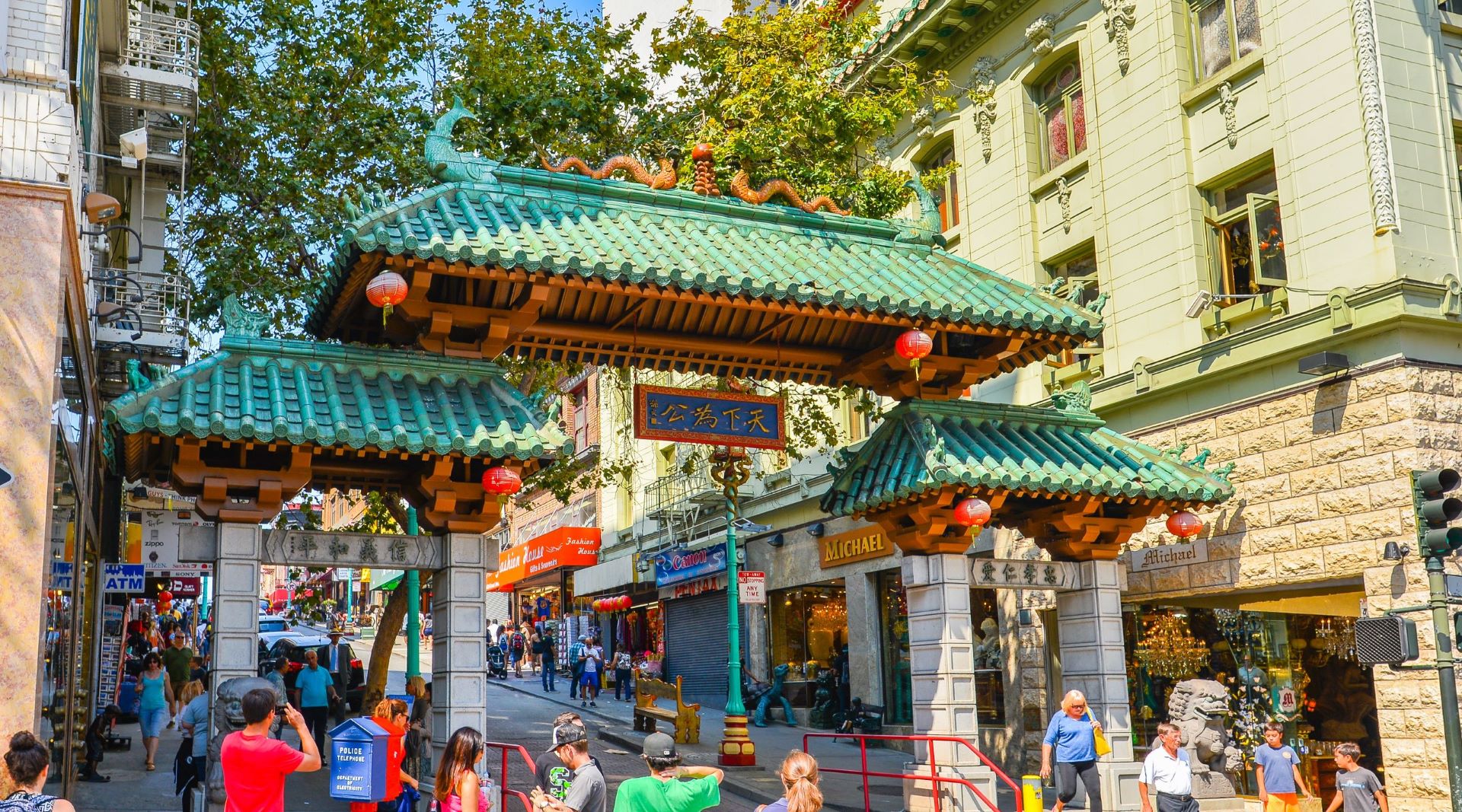
Early Formation (1848-1869)
- Gold Rush Era: The California Gold Rush began in 1848, drawing thousands of immigrants to San Francisco. Among them were Chinese immigrants, primarily from the Guangdong province, seeking fortune and opportunities. By 1852, the Chinese population in California had grown to approximately 25,000. They initially settled in a small area in San Francisco, which marked the beginnings of Chinatown.
- Early Settlement: Chinese immigrants faced significant discrimination and were often restricted to certain areas, leading to the concentrated development of Chinatown. They established businesses like laundries, restaurants, and herbal medicine shops, which catered to both Chinese and non-Chinese customers.
Railroad Era (1865-1869)
- Transcontinental Railroad: The construction of the Transcontinental Railroad (completed in 1869) brought a significant influx of Chinese laborers. They played a crucial role in building the railroad, particularly through the challenging terrain of the Sierra Nevada.
- Post-Railroad Settlement: After the railroad’s completion, many Chinese laborers settled in San Francisco, further expanding Chinatown. This period also saw the rise of anti-Chinese sentiment, culminating in the Chinese Exclusion Act of 1882, which severely restricted Chinese immigration and made life difficult for those already in the U.S.
Early 20th Century and the 1906 Earthquake
- 1906 Earthquake and Fire: The 1906 San Francisco earthquake and subsequent fire devastated Chinatown, destroying most of its buildings. However, the community quickly rebuilt, with the reconstruction effort transforming Chinatown into a more architecturally distinct and culturally vibrant neighborhood.
- Rebuilding and Modernization: The rebuilding process incorporated Chinese architectural styles and cultural elements, attracting tourism and helping to preserve Chinese traditions and identity.
World War II Era (1939-1945)
- Impact of World War II: During World War II, Chinese Americans faced less discrimination as the U.S. and China were allies against Japan. The Magnuson Act of 1943 repealed the Chinese Exclusion Act, allowing for a small quota of Chinese immigrants and enabling naturalization.
- Post-War Changes: The war brought economic opportunities and a shift in public perception. Many Chinese Americans contributed to the war effort and, after the war, sought greater integration into American society while maintaining cultural traditions within Chinatown.
Late 20th Century to Early 21st Century
- Immigration and Economic Changes: The Immigration and Nationality Act of 1965 removed national origin quotas, leading to increased Chinese immigration. This influx revitalized Chinatown with new businesses and cultural exchanges.
- Economic Challenges and Gentrification: While Chinatown continued to thrive culturally, it faced economic challenges, including rising property values and gentrification pressures. Long-standing businesses struggled to compete with newer, more upscale developments.
Current State (2024)
- Cultural and Economic Hub: Today, Chinatown remains a vital cultural and economic hub, attracting tourists and serving as a focal point for Chinese American culture. It continues to be a center for traditional festivals, cuisine, and heritage.
- Immigration Trends: Current immigration trends show a diverse range of Chinese immigrants, including students, professionals, and families seeking new opportunities.
- Economic Resilience and Challenges: The community has shown resilience in the face of economic challenges, including the COVID-19 pandemic. Efforts to preserve the cultural heritage and support small businesses have been crucial in maintaining Chinatown’s unique character.
- Community Initiatives: Various community organizations and initiatives focus on preserving Chinatown’s history, supporting immigrant populations, and promoting economic development. These efforts aim to balance modernization with cultural preservation, ensuring that Chinatown remains a vibrant and integral part of San Francisco.
San Francisco’s Chinatown has evolved significantly from its early days during the Gold Rush to the present. Despite numerous challenges, including discrimination, natural disasters, and economic pressures, it has maintained its cultural identity and continues to be a symbol of resilience and community strength. Today, Chinatown stands as a testament to the enduring legacy of Chinese immigrants and their contributions to the fabric of American society.
-Lữ Hành-
